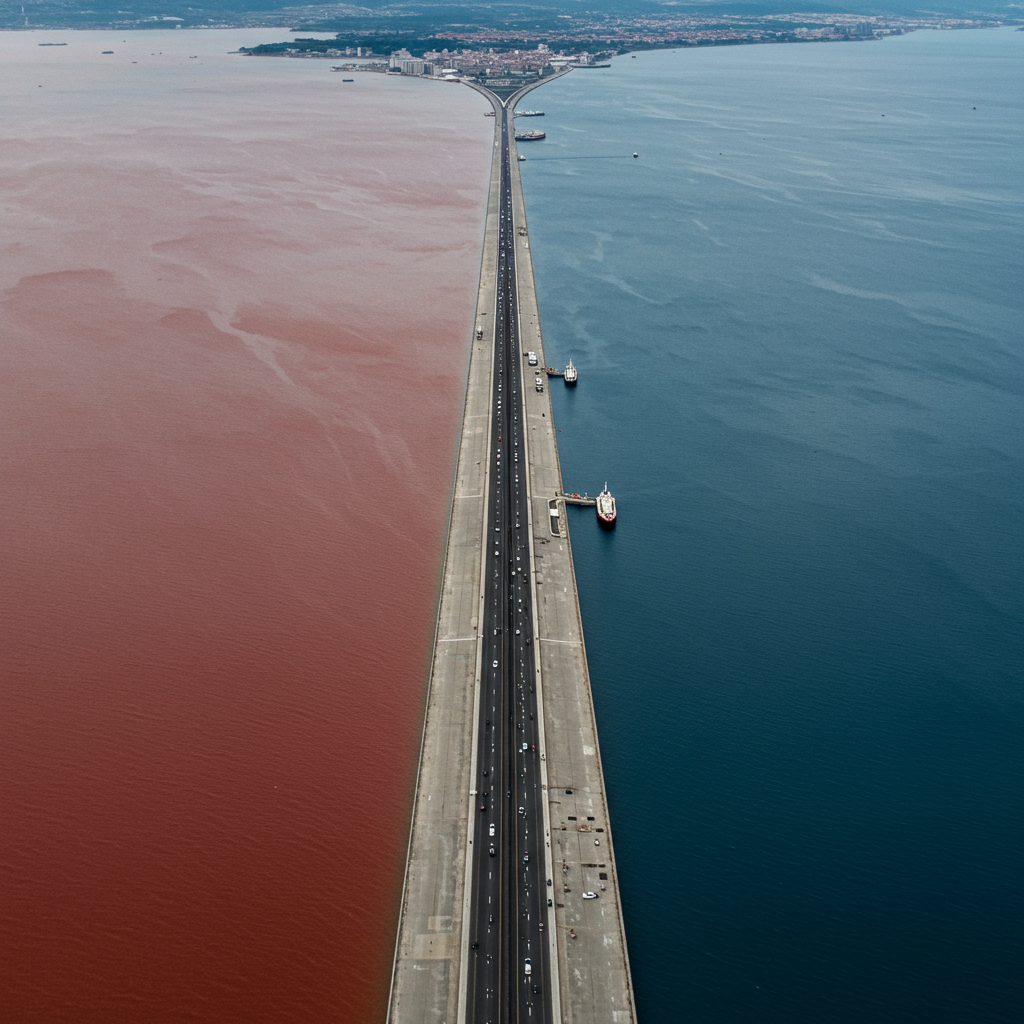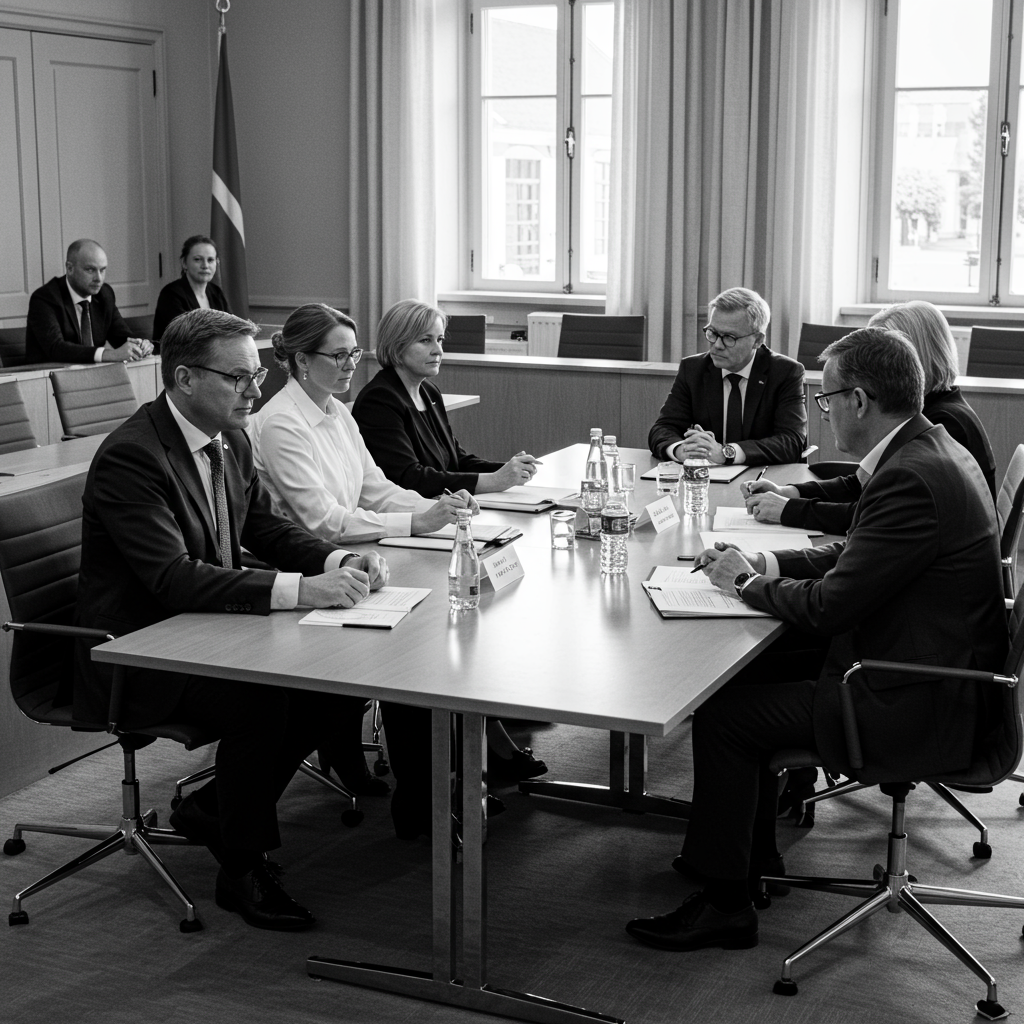Italy has officially greenlit the construction of the ambitious Strait of Messina Bridge, a monumental project set to connect Sicily with the Italian mainland. This long-debated infrastructure marvel, now given final approval by Giorgia Meloni’s government, represents a significant step towards transforming southern Italy’s connectivity and economic landscape. Expected to become the world’s longest single-span bridge, this €13.5 billion undertaking promises to redefine travel and trade in the region, despite decades of controversy.
Unveiling Italy’s Next Engineering Masterpiece
The Strait of Messina Bridge is designed to be an unparalleled feat of engineering. With a total length of nearly 3.7 kilometers (2.3 miles) and an impressive suspended span of 3.3 kilometers (over 2 miles), it will significantly surpass Türkiye’s Çanakkale Bridge, currently the longest. This makes it the longest suspension bridge globally. The bridge’s deck will stretch approximately 60 meters wide. It will seamlessly integrate multi-modal transport. This includes six road lanes, two dedicated railway tracks, and two service lanes.
Two colossal towers, each standing 399 meters tall and weighing 55,000 tonnes, will support the structure. These towers will feature highly resistant steel. Each consists of two legs connected by three crossbeams. The foundations are equally robust. Sicily’s tower footing will measure 55 meters in diameter, with Calabria’s at 48 meters. Four main cables, each 1.26 meters in diameter and composed of an astonishing 44,323 steel wires, will provide stability.
The design emphasizes extreme durability. The bridge can withstand winds up to 292 km/h. This speed far exceeds historical records for the region. It is also engineered to endure major earthquakes. Its location is in one of Europe’s most seismically active zones. Webuild, the lead contractor, asserts that suspension bridges are inherently resilient to seismic forces. They cite successful constructions in Japan, Türkiye, and California as proof. The bridge boasts an anticipated design lifespan of 200 years. It will operate continuously, 24 hours a day, 365 days a year. A clearance of 72 meters above sea level will allow ship passage. This reduces to 70 meters under full load.
Driving Economic Transformation in Southern Italy
Proponents argue the Strait of Messina Bridge will deliver a much-needed economic boost to Italy’s historically less prosperous southern regions. Transport Minister Matteo Salvini, a key backer, described it as “a metro over the strait” and “a project without precedent in the world.” He stated the bridge would stimulate growth across the south. Currently, crossing the Strait of Messina from Messina to Villa San Giovanni by ferry takes about 30 minutes. The bridge will drastically cut this. Car journeys will take just 10 minutes. Trains will save 2.5 hours in transit. The bridge’s capacity will handle 6,000 cars per hour and 200 trains daily.
Pietro Salini, CEO of Webuild Group, the consortium leading the construction, believes the project will be “transformative for the whole country.” Webuild estimates the bridge’s construction will generate over 100,000 jobs. Some analyses suggest this could reach 120,000 jobs annually. Billions more in related infrastructure investments are expected. The project also encompasses extensive related infrastructure. This includes over 40 kilometers of new roads and railways, much of it in tunnels. Three new underground stations are planned for Messina itself.
A Legacy of Debate: From Berlusconi’s Dream to Meloni’s Priority
The concept of a bridge linking Sicily to the Italian mainland has fueled debate for decades. Discussions began as early as the late 1960s. The project was a long-held dream of Italy’s late former Prime Minister Silvio Berlusconi. Despite his efforts during three governments, the project faced rejection. High costs, engineering impracticability, and environmental impact were consistent obstacles.
Giorgia Meloni’s right-wing government revived the project shortly after taking power in 2022. They designated it a high priority. The inter-ministerial committee gave the final green light for its construction. This decision now awaits validation from the national audit court, which typically takes a few weeks. Transport Minister Salvini remains optimistic that preliminary works, including archaeological and geological surveys, could commence as early as September or October. Full construction is slated for the following year. The overall project is expected to take 10 years to build, with a target completion date between 2032 and 2033.
Navigating a Labyrinth of Challenges
Despite the strong political endorsement, the Strait of Messina Bridge faces significant, long-standing controversies. These issues have plagued the project for decades, repeatedly leading to its previous cancellations.
The Cost Conundrum
With €13.5 billion allocated, the financial scale of the project is immense. Critics, including Angelo Bonelli, an MP for the Greens and Left Alliance, have denounced the plan as “a colossal waste of money.” They argue the funds could be better spent on other urgent national infrastructure needs. Previous attempts to approve the bridge consistently stalled due to its prohibitive expense. The substantial investment raises questions about fiscal responsibility in a country grappling with public debt.
Environmental Ripples
Environmental associations have filed a formal complaint with the European Union. They highlight serious risks to the local environment and biodiversity. Concerns include the potential impact on migratory birds, a critical issue for the region’s delicate ecosystems. Opponents argue that environmental studies have not adequately demonstrated the project’s public imperative. They also question how potential environmental damage would be effectively offset. The massive scale of construction and associated infrastructure could permanently alter the unique natural landscape of the Strait.
Building on Shifting Ground: Seismic Resilience
The proposed construction site is located in one of Europe’s most seismically active regions. The Messina fault, which caused a deadly earthquake in 1908, runs through the area. This raises persistent concerns about the bridge’s structural integrity. While Webuild emphasizes the resilience of suspension bridges to seismic forces, the historical context amplifies public apprehension. Ensuring absolute safety against major tremors remains a paramount engineering and public trust challenge.
Combating Organized Crime: Mafia Threat
A major, deeply rooted fear is the potential for organized crime to infiltrate the project. Specifically, the Cosa Nostra and ‘Ndrangheta criminal gangs are highly active in the region. They could exploit the project’s vast supply chain and operations for illicit profits. Transport Minister Salvini has explicitly addressed this concern. He stated that countering criminal involvement would be the government’s “raison d’être.” He vowed to monitor the entire supply chain and declared the bridge would not be built if mafia presence was discovered. To bolster anti-mafia measures, Webuild appointed Gianni De Gennaro, a former head of Italian police and intelligence services, as president of Eurolink, the construction consortium. Italy’s president also insisted the project remain subject to standard anti-mafia legislation to avoid weakening controls.
The Human Toll: Expropriation Concerns
An estimated 4,000 residents on both sides of the strait will be compelled to vacate their homes. This is part of an extensive expropriation plan. While compensation is promised, this aspect has fueled frequent and vocal protests against the bridge’s construction. Citizens’ groups actively campaign against the bridge, deeming it unnecessary and disruptive to local communities. The human cost of displacement adds a significant layer of social controversy to the project.
“Dual Use” Controversy: Military Implications
Adding another layer of debate, the government intends to classify the bridge as “dual use.” This means it would serve both civilian and defense-related purposes. This classification would allow the cost to contribute towards Italy’s commitment to raise defense spending to NATO’s targeted 2% of GDP. Specifically, it could count towards a 1.5% security component. The rationale is that the bridge would serve as a strategic corridor for rapid troop movements and equipment deployment to NATO’s southern flanks. However, this move has been met with opposition from over 600 professors and researchers. They argue that such a designation would necessitate additional assessments for military resilience and could potentially make the bridge a target in times of conflict.
The Road Ahead
The contract for the design and construction of this landmark project has been awarded to the Eurolink consortium. This group is spearheaded by the Italian construction firm Webuild, with key partners including the Spanish group Sacyr and the Japanese group IHI. The initial approval enables the commencement of preliminary works. These include essential archaeological and geological surveys, alongside the authorization of necessary land expropriations. The project is projected for completion by 2032-2033, aiming for a seven-year construction phase. The Strait of Messina Bridge thus embodies a profound division in Italy. Proponents view it as vital modern infrastructure and an economic catalyst. Opponents see it as an environmentally destructive, financially irresponsible, and inherently risky endeavor.
Frequently Asked Questions
What are the key features and purpose of the Strait of Messina Bridge project?
The Strait of Messina Bridge is an ambitious infrastructure project designed to connect Sicily to mainland Italy. It will be the world’s longest single-span suspension bridge, stretching 3.7 kilometers in total length with a 3.3-kilometer suspended span. Its design includes six road lanes and two railway tracks, capable of handling 6,000 cars per hour and 200 trains daily. The primary purpose is to drastically reduce travel times across the Strait of Messina, provide a significant economic boost to southern Italy, and create over 100,000 jobs through its construction and related infrastructure.
How will the Strait of Messina Bridge impact travel and the economy in Southern Italy?
The bridge is poised to revolutionize travel across the Strait of Messina. Currently, a ferry journey takes about 30 minutes; the bridge will reduce car crossing times to just 10 minutes and save trains approximately 2.5 hours in transit. Economically, proponents argue it will be a major stimulus for southern Italy, a region historically less prosperous. The project, with its €13.5 billion investment, is expected to generate a substantial number of jobs during its 10-year construction phase and attract further related infrastructure investments, fostering regional development and improved connectivity.
What are the main controversies and risks associated with the Strait of Messina Bridge?
The Strait of Messina Bridge project faces significant controversies. Key concerns include its massive €13.5 billion cost, which critics deem wasteful. Environmental groups highlight potential damage to local ecosystems and migratory bird routes, with complaints filed with the EU. The bridge’s location in a highly active seismic zone raises structural integrity fears, despite engineering assurances. A persistent worry is the potential for mafia infiltration into the construction process. Finally, the proposed expropriation of homes for approximately 4,000 residents has led to ongoing protests, adding a social dimension to the project’s opposition.
Conclusion
The final approval for the Strait of Messina Bridge marks a pivotal moment for Italy. This project, decades in the making, embodies both grand ambition and deeply entrenched controversy. While proponents foresee a transformative economic boost for southern Italy and a marvel of modern engineering, critics remain vigilant regarding its costs, environmental impact, seismic resilience, and the ever-present threat of organized crime. As preliminary works begin, the world will watch closely to see if Italy’s bold vision for this monumental connection can successfully navigate the challenges ahead and deliver on its promise to link a divided nation.



